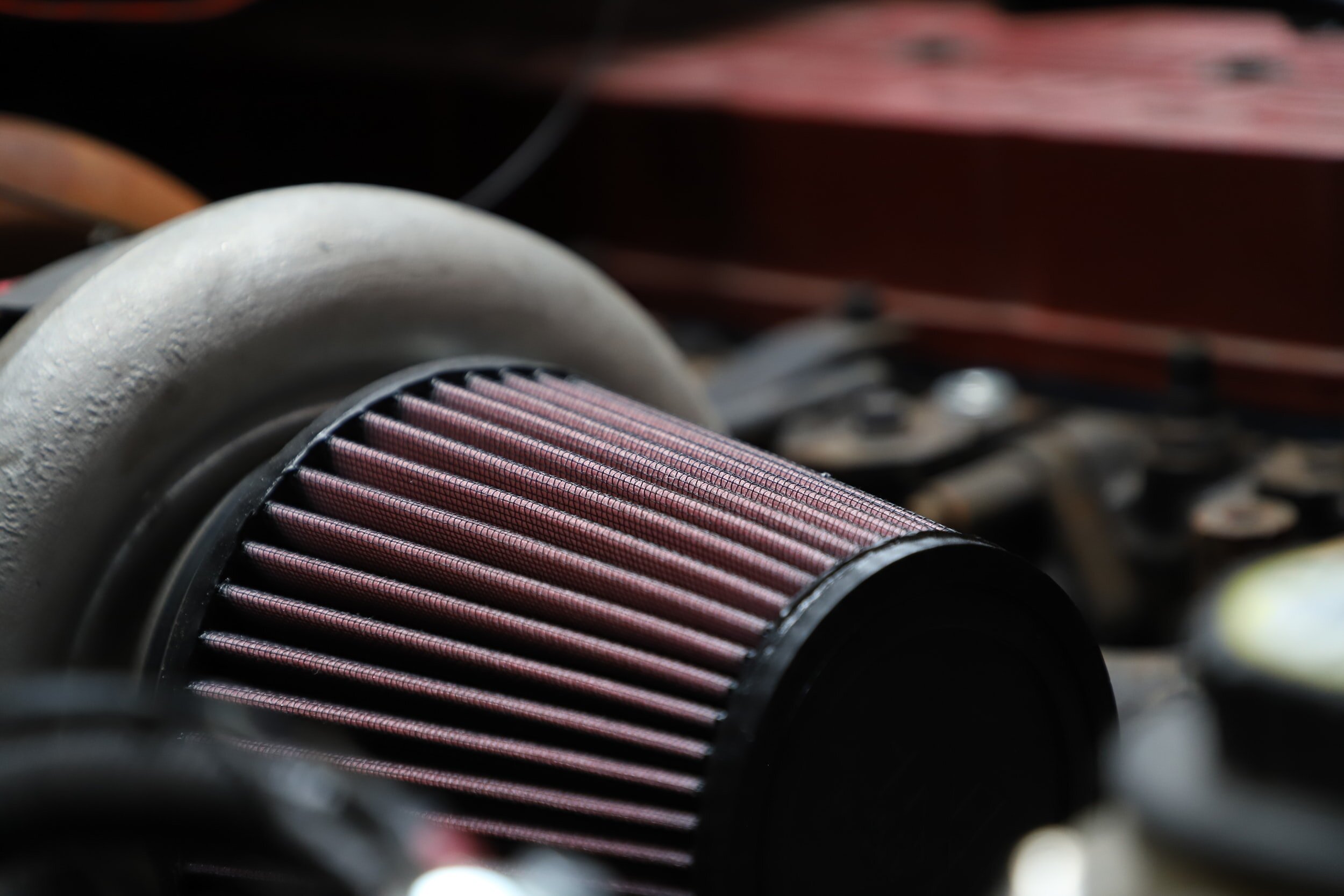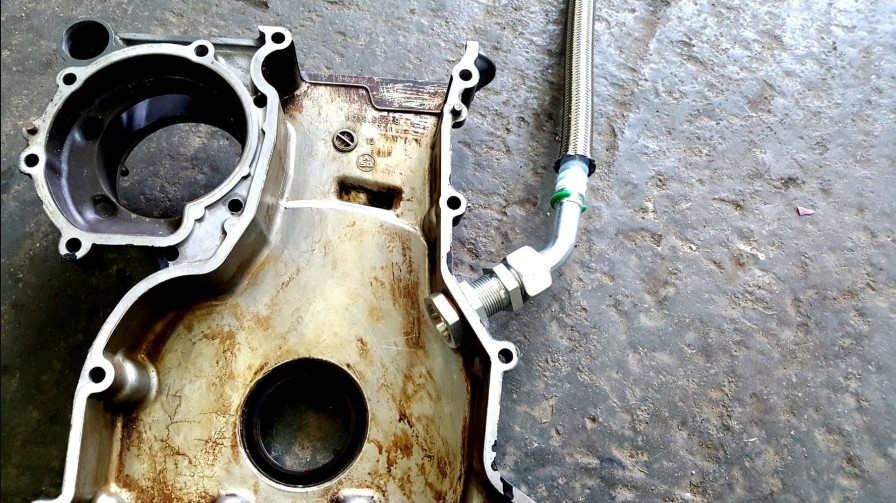E36 Turbo Guide
Overrun Tuning specializes in making your BMW fast. This guide will give you all the information you need to start your E36 turbo build.
This guide will be broken down into the following sections,
Block+Head
This section will highlight the differences between the engine blocks and heads.
Exhaust
This section will cover turbo selection, exhaust manifold options and hot side piping.
Intake
This section will cover the intake manifold, fueling, intercooler and cold side piping.
Electronics
This section will cover the electronics, wiring, sensors and engine management options.
Block
M52 Aluminium Block
All M52 blocks in Australia are made out of aluminium. In some rare cases, certain castings came with steel sleeves - they are incredibly rare to find. The large majority came with Nikasil coated cylinder liners.
The main weaknesses of the aluminium block are the threads and cylinder wall wear. The threads for the head bolts commonly strip clean upon removal. The Nikasil liners often wear out and as a result the cylinder walls become uneven - typically rendering the block useless.
Recommended Upgrades for Boost
Use head studs instead of bolts - do NOT use ARP M50/M52 head studs they are not right length - use Raceware M52TU/M54 head studs.
Time-Sert the head bolt threads
Drill and tap to M12x1.5 (from M10) and use larger studs
If using a 3.0L 89.6mm stroke crank or plan to increase the rev limit drastically 7200RPM+, consider installing an oil chain tensioner. This reduces the slack and vibrations of the chain rattling the oil pump nut loose at high RPM.
M50 Iron Bock
The M50 iron block is the ideal block for boosted builds. There are two varieties of the M50 iron block, the M50B20 and M50B25. The major difference is the bore diameter - 80 vs 84mm respectively. Unfortunately, the M50B20 has a different casting and the cylinders cannot be bored out to 84mm reliably.
M50B25 and M50B25TU have essentially the same blocks, with some early M50B25NV blocks coming with a oil pump chain tensioner from factory (rare).
Recommended Upgrades for Boost
Use ARP head studs - beware of fakes! Easily identifiable by the price difference.
If going for big power, consider drilling and tapping to M11 and use S54 ARP head studs.
If using a 3.0L 89.6mm stroke crank or plan to increase the rev limit drastically 7200RPM+, consider installing an oil chain tensioner. This reduces the slack and vibrations of the chain rattling the oil pump nut loose at high RPM.
Rotating Assembly
M52 Alloy
Safe HP Limit
M52B25: 400HP
M52B28:450HP
Weaknesses
Skinny/weak factory rods
Ring lands breaking due to detonation
Head lifiting/head gasket seal
M52B25: Small displacement resulting in more turbo lag.
M52B25: Cast Crank
M50
Safe HP Limit
M50B25 Non-Vanos: 550HP
M50B25TU:500HP
Weaknesses
M50B25TU has skinner rods than NV, however thicker than M52
Ring lands breaking due to detonation
Small displacement resulting in more turbo lag.
Cast Crank
Forged Rotating Assembly
Safe HP Limit
M5xB30: 800HP
M5xB28:750HP
Requirements
Forged Rods with ARP Rod Bolts
Forged Pistons 84.5mm Bore, ~9.0C/R for pump gas, ~10.0 C/R for E85
ATI Damper if revving over 7000 RPM
M54B30 Rotating Assembly
Safe HP Limit
M54B30:550HP
Weaknesses
Skinny/weak factory rods
Ring lands breaking due to detonation
Thin pistons prone to heat
Head
The M50NV/M50TU/M52 heads are all interchangeable between M50 and M52 blocks. The general casting is the same however with differences in the valvetrain.
M52 Head
Valve Springs: Single Conical
Valve Stem: 6mm
Lifter Diameter: 33mm
VANOS: Yes
Valve Cover: Early M52s came with Magnesium valve covers - essential as it prevents the downpipe from melting the valve cover on top mount setups. The majority came with plastic valve covers.
Ignition Coils: Not exchangeable with M50NV/TU
M50 Head
Valve Springs: Single Cylindrical
Valve Stem: 6mm
Lifter Diameter: 35mm
VANOS: Yes
Valve Cover: Magnesium
M50 Non-Vanos Head
Valve Springs: Double Cylindrical
Valve Stem: 7mm
Lifter Diameter: 35mm
VANOS: No - The VANOS unit can be retrofitted, the VANOS mounting area needs to enlarged to fit the mechanism.
Valve Cover: Magnesium
Head Gasket
For all boosted applications the only head gasket that should be is a copper cut-ring style headgasket. Athena/JE make them with various bore diameters at 2mm thickness. The cut-ring head gasket reinforces the seal between the head and the cylinder.
MLS head gaskets come in different thicknesses to lower or increase compression ratio - however they are not recommended as they have sealing issues. MLS head gaskets requires the head and block surface to be perfectly flat in pristine condition.
For low boost, the stock headgasket will suffice provided the head bolts are upgraded to studs - can be done with the head still attached to the block.
Exhaust
The Turbo
The recommended turbo size is directly correlated to the displacement size of your engine. For those aiming for 15psi or below, consider turbos with internal wastegates - less plumbing and saves you the cost of a wastegate. Never ever use a cheap/replica/fake external wastegate!
2.0-2.5L: Garrett GTX3071R, GTX3076R, G30-770 or similar
2.8-3.2L: GTX3076R, GTX3582R, GTX3584RS, G35-900, G35-1050 or similar
For those looking at breaking the 1000whp mark, GTX42/G42 or larger turbo is required.
Exhaust Manifold
Fear no more - Overrun Tuning has the solution to the trickiest part of any RHD E36 turbo build: the exhaust manifold and downpipe.
Overrun Tuning has worked with K64 Performance to bring you a headache free, direct bolt on exhaust manifold and downpipe kit (Yes - that is an Overrun built engine as the featured photo for the RHD manifold kits). Now with an option to retain AC with custom lines. Picture on the right is the standard tubular manifold with 2.75 to 3 inch downpipe. Contact us today to order your manifold kit - our pricing is unmatched.
Manifold Flange Options: T3/T4/V-Band
Downpipe Flange Options: Garrett 4 or 5 bolt/V-Band
Wastegate Port: 50mm
Turbo Oil + Coolant Lines
Turbo Oil Feed: Oil for the turbo is provided from the VANOS line on the oil filter housing, use this custom Rally Road banjo bolt.
Turbo Oil Return: The oil return is a gravity return from the turbo to the bottom left of the front timing cover. A fitting can be installed here - see photo to the left.
Turbo Coolant Feed and Return: Remove the coolant lines for the throttle body and plumb them to the turbo. The throttle body does not need to be cooled.
Intake
Intake Manifold
The preferred OEM intake manifold is the intake manifold from a M50B25. The 2.5L M50s have thicker runners that flow much better than M52 intake manifolds.
If you are chasing more power, consider an aftermarket aluminium intake manifold.
Injectors
Commonly used larger injectors that fit M50/M52 fuel rail (stock fuel pressure is 3.5bar, EV1 connector)
Siemens Deka 60lb 680cc @ 3.5 bar FI114961 - Spec Sheet
Siemens Deka 80lb 906cc @ 3.5 bar FI114992 - Spec Sheet
Fuel Pump
Fuel Pump Size Calculator - Stock fuel pump is approx. 105LPH
The below fit in-tank with minor modifications.
Walbro 255/460/525
DW300/400/440
Fuel Pressure Regulator
Does not need to be upgraded - aftermarket regulators typically have gauges which come in handy.
Fuel Rail and Fuel Lines
Stock rail and fuel lines are good for 800hp.
Fueling
Throttle Body
If using the M52 throttle body on the M50 manifold a spaccer/flange should be used to prevent boost leaks.
Idle Control
The ICV in stock form isn’t very securely attached to the M50 intake manifold. The connector between the ICV and the manifold is one of the major culprits for boost leaks. The ICV port on the manifold can simply be blocked off and epoxied shut. On low boost levels the ICV can be retained.
Intercooler + Piping
The typical intercooler core size used is 600 x 300 x 76mm, this is a fairly standard universal intercooler sizing. There is enough room next to the chassis rails for 3” tubing. A suitable route can be made from universal intercooler piping kits, however there are companies that make mandrel bent piping for easy installation.
Electronics
ECU
Bosch Motronic 3.3.1 aka Red Label 413
M50B25TU
The M50B25TU uses a Bosch Motronic 3.3.1 (Red Label 413) DME. This ECU can be tuned for boost however as it is OBD1 protocal, the logging and Diagnostic Trouble Code reporting is highly limited.
The go-to ECU for all M50B25TU turbo builds is the Link E36X Plug and Play ECU. This unit simply replaces the stock unit without any wiring.
Siemens MS41.0 (MS41.1/MS41.2)
M52
All M52s come with a variant of the Siemens MS41.0 DME. Newer versions such as MS41.1 or MS41.2 are physically identical and interchangeable - similarily the software version is also interchangeable between the variants.
This ECU can be tuned for boost and is adequate for low/medium boost levels. The MAF will need to be upgraded and a suitable tune needs to be implemented.
Unfortunately Link does not make a PNP ECU for the M52, however there are others that do such as VEMS, kdFI etc. To use the Link E36X on a M52, replace the M52 harness with an M50B25TU harness and use the sensors from the latter.
Link G4X BMWLINK – E36X PNP for M50B25TU
LINK G4X E36X
The Link E36X is the recommended option for all M5x engine builds. Using the M50B25TU loom and coresponding sensors, this ECU is plug & play for all M50s and M52s.











